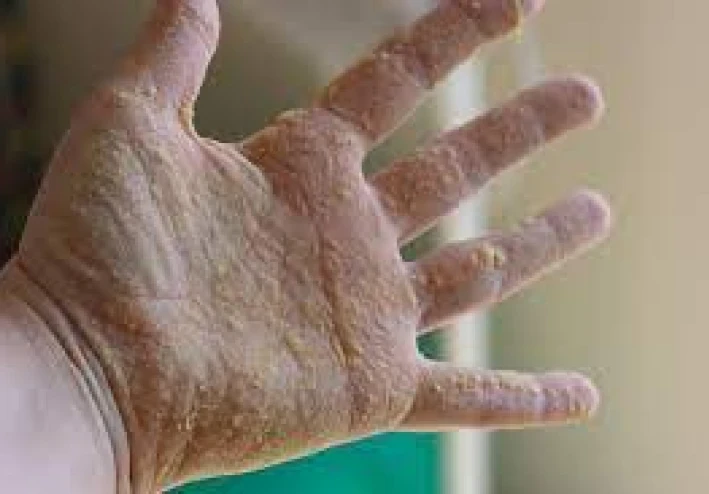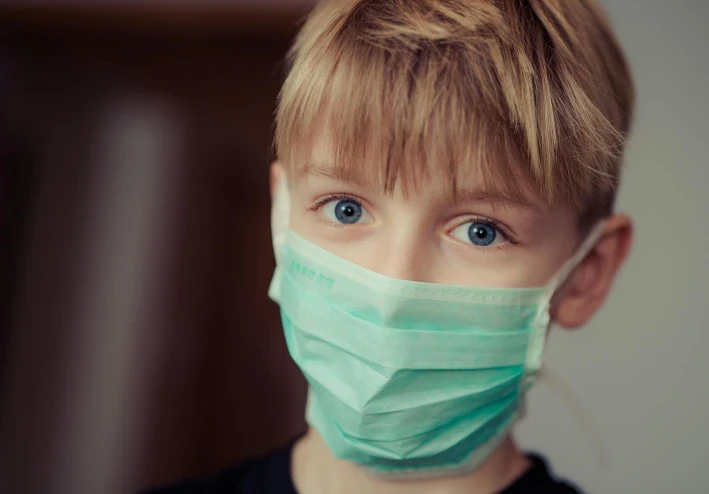
Varicose Veins : Dangers, and the Prevention Strategies
Varicose Veins: Understanding the Bulges, the Dangers, and the Prevention Strategies
What are Varicose Veins?
Varicose veins are twisted, enlarged veins that bulge just beneath the surface of the skin. They are most commonly found in the legs, but they can also occur in other parts of the body, such as the thighs, calves, and ankles. Varicose veins can be unsightly and cause discomfort, but they can also be a sign of an underlying health condition.
What Causes Varicose Veins?
The normal function of veins is to carry blood back to the heart. Inside the veins, there are tiny valves that help keep blood flowing in the right direction. When these valves become weak or damaged, blood can pool in the veins, causing them to stretch and bulge.
There are a number of factors that can increase your risk of developing varicose veins, including:
- Pregnancy: Pregnancy puts a strain on the veins in the legs, which can lead to varicose veins.
- Obesity: Being overweight or obese increases the pressure on the veins in the legs.
- Age: As you age, the valves in your veins become weaker, which can increase your risk of varicose veins.
- Family history: If you have a family history of varicose veins, you are more likely to develop them yourself.
- Gender: Women are more likely than men to develop varicose veins.
- Prolonged standing or sitting: Standing or sitting for long periods of time can increase your risk of varicose veins.
- Hormonal changes: Hormonal changes, such as those that occur during pregnancy, menopause, and puberty, can increase your risk of varicose veins.
What Causes Varicose Veins?
Healthy veins have one-way valves that keep blood flowing from the legs back towards the heart. When these valves weaken or become damaged, blood can pool in the veins, causing them to stretch and bulge. This pooling of blood increases pressure within the vein, further weakening the valves and creating a vicious cycle.
There are several factors that can contribute to the development of varicose veins, including:
- Heredity: Having a family history of varicose veins significantly increases your risk. If a parent or sibling has varicose veins, you are more likely to develop them yourself.
- Pregnancy: Pregnancy puts a significant strain on the circulatory system, especially in the legs. Hormonal changes during pregnancy can also weaken vein walls.
- Age: As we age, the elasticity of our veins naturally decreases, making them more susceptible to becoming varicose.
- Gender: Women are more prone to varicose veins than men due to hormonal fluctuations throughout their lives, particularly during pregnancy, menopause, and menstruation.
- Weight: Excess weight puts additional pressure on the veins in the legs, increasing the risk of varicose veins.
- Occupation: Jobs that require prolonged standing or sitting can contribute to varicose veins. This is because these positions don't allow for frequent movement of the calf muscles, which helps to pump blood back to the heart.
- Tight clothing: Wearing tight-fitting clothing, particularly around the waist and thighs, can restrict blood flow and contribute to varicose veins.
Symptoms of Varicose Veins
Varicose veins can be present without causing any noticeable symptoms. However, when symptoms do occur, they can include:
- Visible, bulging veins: This is the most common symptom of varicose veins. The veins may appear twisted, rope-like, and blue or purple in color.
- Aching pain: This pain is often described as a dull ache or throbbing sensation in the legs, especially at the end of the day or after prolonged standing or sitting.
- Heaviness or fatigue in the legs: This can make it feel difficult to walk or stand for long periods.
- Swelling: The ankles and feet may become swollen, particularly at the end of the day.
- Itching: The skin around the varicose veins may become itchy and irritated.
- Skin discoloration: The skin around the varicose veins may develop a brownish or reddish tint. This is due to chronic inflammation and leakage of blood from the veins.
- Restlessness: Some people with varicose veins experience a feeling of restlessness in their legs, especially at night.
Complications of Varicose Veins
While varicose veins are not usually a life-threatening condition, they can lead to some complications if left untreated. These complications include:
- Ulcers: Chronic swelling and inflammation caused by varicose veins can damage the skin, leading to open sores called ulcers. These ulcers are typically located near the ankles and can be slow to heal and prone to infection.
- Bleeding: Varicose veins can bleed, especially after minor injury. While this bleeding is usually not serious, it can be alarming.
- Blood clots: In rare cases, varicose veins can develop blood clots. This is a more serious complication, as blood clots in the legs (deep vein thrombosis) can break loose and travel to the lungs (pulmonary embolism), which can be life-threatening.
Diagnosing Varicose Veins
Diagnosing varicose veins is usually a straightforward process. During a physical examination, your doctor will visually inspect your legs for visible varicose veins and may ask you to describe your symptoms. In some cases, your doctor may order additional tests to confirm the diagnosis or assess the extent of the varicose veins. These tests may include:
- Ultrasound: This painless imaging test uses sound waves to create images of your veins and assess blood flow.
- Doppler ultrasound: This type of ultrasound uses sound waves to measure blood flow direction and velocity within the veins.
- Venography: This X-ray procedure involves injecting a contrast dye into your veins to make
Dangers of Varicose Veins
While varicose veins are not usually a serious health threat, they can cause a number of problems, including:
- Pain: Varicose veins can cause pain, aching, and throbbing in the legs.
- Swelling: The legs may become swollen, especially at the end of the day.
- Fatigue: Varicose veins can make the legs feel tired and heavy.
- Skin problems: Varicose veins can cause itching, dryness, and discoloration of the skin.
- Ulcers: In severe cases, varicose veins can lead to ulcers, which are open sores on the skin.
- Blood clots: In rare cases, varicose veins can lead to blood clots in the legs.
How to Prevent Varicose Veins
There is no guaranteed way to prevent varicose veins, but there are a number of things you can do to reduce your risk, including:
- Maintain a healthy weight: Losing weight if you are overweight or obese can help to reduce the pressure on your veins.
- Exercise regularly: Exercise helps to improve circulation and strengthen the leg muscles.
- Avoid prolonged standing or sitting: If you have to stand or sit for long periods of time, take breaks to move around and elevate your legs.
- Wear compression stockings: Compression stockings can help to improve circulation and reduce swelling in the legs.
- Elevate your legs: When you are sitting or lying down, elevate your
Treatment Options for Varicose Veins
While there is no cure for varicose veins, there are a number of treatment options available to help manage symptoms, improve appearance, and prevent complications. The best course of treatment for you will depend on the severity of your varicose veins, your overall health, and your preferences. Here's a breakdown of some common treatment options:
1. Self-care Measures:
- Lifestyle changes: Simple lifestyle modifications can significantly improve symptoms and slow the progression of varicose veins. These include:
- Maintaining a healthy weight: Losing weight if you are overweight or obese can help to reduce pressure on your veins.
- Exercise regularly: Regular exercise helps to improve circulation and strengthen the calf muscles, which pump blood back to the heart. Aim for at least 30 minutes of moderate-intensity exercise most days of the week. Activities like walking, swimming, and cycling are particularly beneficial.
- Avoid prolonged standing or sitting: If you have to stand or sit for long periods, take breaks to move around and elevate your legs every 30 minutes or so.
- Wear compression stockings: Compression stockings apply gentle pressure to the legs, which helps to improve circulation and reduce swelling. There are different types of compression stockings available, so it's important to talk to your doctor about which type is right for you.
- Elevate your legs: When you are sitting or lying down, elevate your legs above the level of your heart. This helps to improve blood flow and reduce swelling.
- Dietary changes: Increasing your intake of fiber and flavonoids may be beneficial. Fiber helps to regulate digestion and reduce constipation, which can worsen varicose vein symptoms. Flavonoids, found in fruits, vegetables, and green tea, have anti-inflammatory properties that can help improve circulation.
2. Minimally Invasive Procedures:
- Sclerotherapy: This is a common and effective treatment for small varicose veins and spider veins. During sclerotherapy, a solution is injected into the vein, which irritates the lining of the vein and causes it to scar and close. The closed vein is eventually reabsorbed by the body. Sclerotherapy is usually performed in an outpatient setting and requires multiple sessions to achieve optimal results.
- Laser treatment: Laser treatment uses laser energy to heat and destroy the varicose vein. This treatment is typically used for small to medium-sized varicose veins. There are different types of laser treatments available, and the specific type used will depend on the size and location of the varicose vein. Laser treatment is usually performed in an outpatient setting and may require more than one session.
- Radiofrequency ablation (RFA): RFA uses radiofrequency energy to heat and destroy the varicose vein. A small catheter is inserted into the vein, and radiofrequency waves are emitted to damage the vein lining. The damaged vein then collapses and is eventually reabsorbed by the body. RFA is typically used for larger varicose veins and is usually performed in an outpatient setting.
3. Surgical Procedures:
- Ambulatory phlebectomy: This minimally invasive surgical procedure involves removing small varicose veins through tiny incisions in the skin. Ambulatory phlebectomy is typically performed in an outpatient setting using local anesthesia.
- Vein stripping and ligation: This traditional surgical procedure involves making small incisions in the groin and leg. The surgeon then ties off (ligates) the problematic vein and removes (strips) it. Vein stripping and ligation is a more invasive procedure than other options and typically requires general anesthesia.
Living With Varicose Veins
If you have varicose veins, there are a number of things you can do to manage your symptoms and prevent them from getting worse. These include:
- Following the self-care measures mentioned earlier, such as maintaining a healthy weight, exercising regularly, wearing compression stockings, and elevating your legs.
- Avoiding wearing tight clothing around the waist and thighs.
- Keeping your skin well-hydrated to prevent itching and irritation.
- Seeing your doctor for regular checkups to monitor your varicose veins and address any new or worsening symptoms.
Conclusion
Varicose veins are a common condition that can cause a range of symptoms, from mild discomfort to more serious complications. While there is no cure for varicose veins, there are a number of effective treatment options available to help manage symptoms and improve quality of life. If you are concerned about varicose veins, it is important to see your doctor for diagnosis and discuss the best treatment options for you.
































